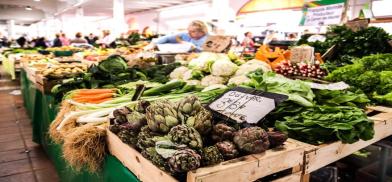Inflation wrecks havoc in Pakistan; touches 12 percent in December
The inflation rate in Pakistan reached a new level last month, recording 12.3 percent in December— the highest in the last two years, as experts warn of more trouble in the weeks ahead of the government’s mini-budget

The inflation rate in Pakistan reached a new level last month, recording 12.3 percent in December— the highest in the last two years, as experts warn of more trouble in the weeks ahead of the government’s mini-budget. The government is expected to roll back significant relief measures — tax relief, subsidies, and spending cuts among others— as part of its deal with the International Monetary Fund (IMF) for securing a bailout.
The Consumer Price Index (CPI), jumped to 12.3% in December over the same month a year ago, showing the data released by the Pakistan Bureau of Statistics on Saturday. This came after the government increased the price of petrol PKR 4 rupees per liter.
High prices of fuel and other commodities in the global market are mainly driving inflation. Policy decisions such as pumping huge cash subsidies for the growth recovery—which resulted in the currency depreciation—also contributed significantly to the making of the crisis.
The Wholesale Price Index (WPI) was around 26 percent in December, dashing any hope of relief in the coming months. In response, Pakistan’s central bank is expected to hike the interest rates. Critics, however, say the problem can’t be resolved just by hiking interest rates.
Non-food inflation surged to 13.4 percent in urban areas and 14 percent in rural areas last month—the highest pace in the non-food inflation in the last 12 years, reported The Express Tribune, citing official data released by the government agencies.
The pace of food inflation accelerated to 11.7% in cities and to 9% in villages and towns. Prices of non-perishable goods jumped significantly as people still awaited the government’s decision to reduce prices of cooking oil, sugar, and wheat flour.
The less than expected growth in exports and the exponential rise in imports over the last several months has put considerable pressure on the country’s current account deficit–which reached a three-year high, recording 1.9 billion in November.
(SAM)









Post a Comment